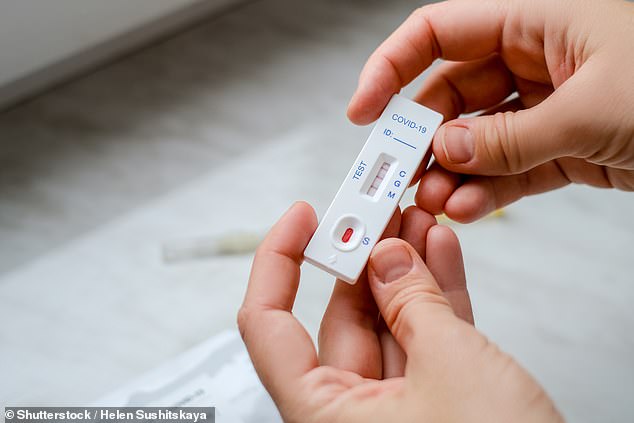Scientists may have finally found the cause of long Covid: Low iron levels after infection ‘might be trigger of poorly-understood illness’
- In Britain alone, 1.9 million people say they are experiencing symptoms of long Covid-19
- Scientists found that people with long Covid-19 had problems with iron levels in the blood
Experts may have identified the cause of the long Covid-19 virus after discovering that low iron levels after an infection could be a major trigger.
In Britain alone, an estimated 1.9 million people say they are experiencing symptoms of long Covid-19.
These can include fatigue, shortness of breath, muscle pain and problems with memory and concentration – and can persist long after the initial Covid infection has cleared.
Now scientists believe that problems with iron levels in the blood – and the body’s ability to regulate this important nutrient – may be a major cause of persistent problems.
And the discovery could point to possible ways to prevent or treat the condition.
In Britain alone, an estimated 1.9 million people say they are experiencing symptoms of long Covid-19. These symptoms may include fatigue, muscle pain, and loss of smell
Shortly after the start of the pandemic, a team led by Cambridge University began recruiting people who had tested positive for the virus.
Over the course of a year, participants provided blood samples and it became clear that a significant number of patients would continue to have symptoms.
Ultimately, the researchers focused their analysis on 214 people, about half of whom reported long-lasting Covid symptoms between three and 10 months after their infection.
They found that persistent inflammation and low blood iron levels could be observed as early as two weeks after an infection in individuals who reported a long Covid-19 epidemic many months later.
Problems with blood iron levels were detectable in the long Covid group, regardless of age, gender or severity of infection, they found.
Dr. Aimee Hanson, who worked on the study while at the University of Cambridge and now works at the University of Bristol, said: ‘Iron levels and the way the body regulates iron were disrupted early on during the SARS-CoV-2 -infection. and it took a very long time to recover, especially in those people who reported long Covid symptoms months later.
‘Although we saw evidence that the body was trying to correct low iron availability and resulting anemia by producing more red blood cells, it did not do so particularly well in the face of ongoing inflammation.’
Co-author Professor Hal Drakesmith, from the University of Oxford, said iron dysregulation is a natural response to infection.
“When the body has an infection, it responds by removing iron from the bloodstream,” he said.
‘This protects us from potentially deadly bacteria that capture the iron in the bloodstream and grow rapidly. It is an evolutionary response that redistributes iron in the body, and the blood plasma becomes an iron desert.

Researchers found that persistent inflammation and low blood iron levels could be seen as early as two weeks after an infection in individuals who reported long Covid many months later.
‘However, if this continues for a long time, there is less iron for the red blood cells, which means oxygen is transported less efficiently, which affects metabolism and energy production, and for the white blood cells, which need iron to work properly. The protective mechanism eventually becomes a problem.’
The findings, published in the journal Nature Immunology, may help explain why symptoms such as fatigue and exercise intolerance are common in long Covid.
The researchers say the study points to possible ways to prevent or reduce the impact of long Covid-19 by correcting iron dysregulation during early infections.
One approach might be to control the extreme inflammation as early as possible, before it impacts iron regulation.
Another approach could include iron supplementation, but as Dr. Hanson noted, this may not be easy.
“It’s not necessarily that people don’t have enough iron in their bodies, it’s just that it’s stuck in the wrong place,” she said.
“What we need is a way to remobilize the iron and get it back into the bloodstream, where it becomes more useful to the red blood cells.”
